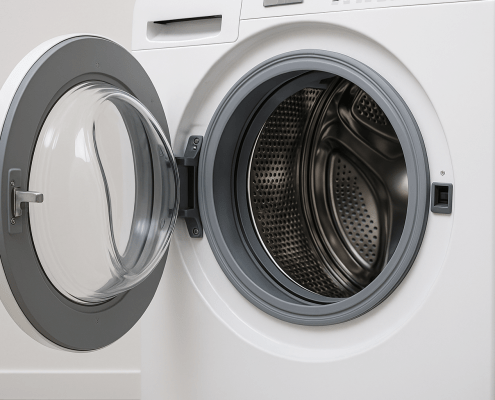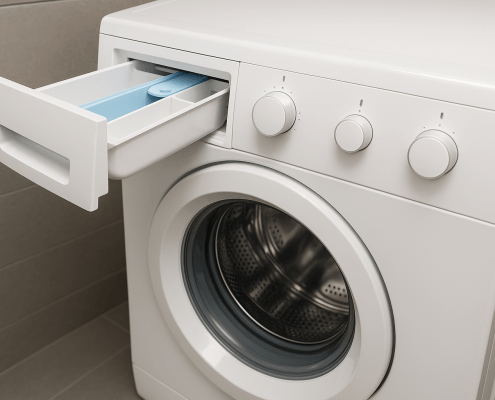How to replace drive hub kit W10528947 on a Whirlpool washer
Steven E / Friday May 16, 2025
Is your washer failing to spin and leaving laundry soaked? You might have a worn-out drive hub on your hands, but fear not—fixing it is easier than you think! Dive into our detailed guide below, which includes a handy how-to video, to get your washer back in the spin of things.
Looking for the right part? Enter your appliance model number below to find the exact match and get your appliance running like new again!
If your Whirlpool, KitchenAid, or Maytag washer isn’t spinning properly during the spin cycle, the problem might be caused by the drive hub, W10528947. This small part connects the inner wash basket to the transmission, allowing the basket to spin when the transmission engages it. If the drive hub is worn out or broken, the basket won’t turn even though the motor is running.
The information in this article may not apply to your specific appliance model. We recommend consulting your manufacturer’s documentation or contact us with any questions.
Symptoms for replacement
The drive hub kit is located under the wash plate and connects the basket to the transmission spin shaft. When this component fails, the washer may enter the spin cycle without the basket turning, accompanied by banging noises, indicating it’s time for a replacement.
What you’ll need
Gather the following tools and supplies before starting this repair:
- Small flat-blade screwdriver
- Deep 7/16 inch socket with a long extension and socket wrench
- Custom or homemade hooks
- Phillips screwdriver
- Putty knife
- Pair of pliers
- Rubber mallet (potentially)
- New drive hub kit (part #W10528947)
The drive hub kit contains the new hub and a retainer clip. Make sure you have this part before disassembling the washer.
Safety precautions
Safety should always be a priority when working on any appliance. Here are a few practical tips to help you stay safe:
- Turn off the power to the appliance by unplugging it or switching off the circuit breaker before starting any maintenance or repairs. This protects you from the risk of electric shock.
- Wear insulated gloves to shield your hands from sharp edges, pinching hazards, or debris.
- Work at a steady pace and take your time to avoid accidents or injuries.
- Make sure your workspace is well-lit so you can clearly see and access the parts you’re working on.
- Keep the area clear of clutter, and ensure children and pets stay out of the workspace.
- Never handle internal parts with wet hands. Check that both your hands and the work area are completely dry.
- Refer to your appliance’s user manual for any specific instructions or safety guidelines related to the part or repair.
- Handle parts gently to avoid damage to the appliance or potential injuries from applying too much force.
- Use safety glasses when dealing with chemicals, dust, or large debris to protect your eyes from harm.
- If the appliance was recently used, give it enough time to cool down before working on any heated components.
- Take photos or notes of wiring connections and terminals before disconnecting anything to make reassembly easier.
- Avoid touching exposed wires or terminals. If you must handle wires, use non-conductive tools or wear insulated gloves to minimize the risk of electrical shock.
Removing the agitator and softener dispenser
- Start by opening the washer lid and removing the fabric softener dispenser from the center agitator.
- Insert a flat-blade screwdriver into the small slot on the side of the dispenser cap.
- Gently pry upwards to pop the dispenser out of the agitator.
- Set it aside in a safe place.
- Next, remove the agitator. There is a bolt on the bottom center that secures the agitator to the wash plate.
- Place a 7/16 inch socket with a long extension on this bolt and turn counterclockwise to loosen it. You don’t need to remove the bolt completely, just loosen it enough to lift off the agitator.
- Insert two small wire hooks into the holes on opposite sides of the agitator top.
- Holding the hooks evenly, lift the agitator straight up to remove it.
- Set the agitator aside.
Removing the drive hub
- With the agitator removed, you’ll see the drive hub retainer clip in the center. Use a flat-blade screwdriver to pry this clip straight up and remove it.
- Remove the six Phillips screws that hold the drive hub in place, using a Phillips head screwdriver. There are three screws evenly spaced around the outer edge of the hub and three more spaced between them.
- Insert a putty knife under the edge of the hub and twist gently to break the seal.
- Carefully pry up the drive hub and remove it.
- Clean away any grime, old putty, or residue from the now-exposed shaft using dish soap, rinse with water, and dry thoroughly with a clean rag.
Installing the new drive hub
- Remove the new retainer clip from the replacement drive hub.
- Place the new hub over the shaft, aligning the hub’s splines with the matching splines on the shaft.
- Press down firmly to seat the hub. You may need to tap it gently with a rubber mallet.
- Insert three of the Phillips screws loosely to hold the hub in place.
- Tighten each screw partially, then go back and tighten them fully. This ensures even contact between the hub and shaft.
- Install the remaining three screws.
- Press the new retainer clip into the slots around the hub. You may need to tap it into place with a mallet.
Reassembling the washer
- With the new hub installed, put the wash plate back on.
- Align the splines and press down firmly.
- Replace the agitator on the wash plate shaft.
- Insert the long bolt up through the bottom and tighten securely with the socket wrench.
- Finally, snap the fabric softener dispenser back into the top of the agitator.
Recalibrating the washer
- Plug in and connect the washer to power and water.
- Locate the recalibration instructions included with the new hub kit.
- Follow the steps precisely to reset the washer computer.
- Select a wash cycle and allow the tub to fill partially with water.
- Advance through the cycles to spin.
- The module will sense the new hub and recalibrate accordingly.
More information
Thanks for reading! If you have any other appliance repair needs or projects, you can find more resources including our DIY blog at AppliancePartsPros.com. There, you can enter your model number to order the exact parts you need. Most orders arrive in two business days.
You can also reach our award-winning customer service team at 1-877-477-7278, chat with a pro on our website, and watch thousands of free video tutorials on our YouTube channel.
With nearly a decade of experience in providing top-notch customer service regarding appliance parts and repair, Steven enjoys sharing practical advice, troubleshooting tips, and interesting information to help readers stay informed.





